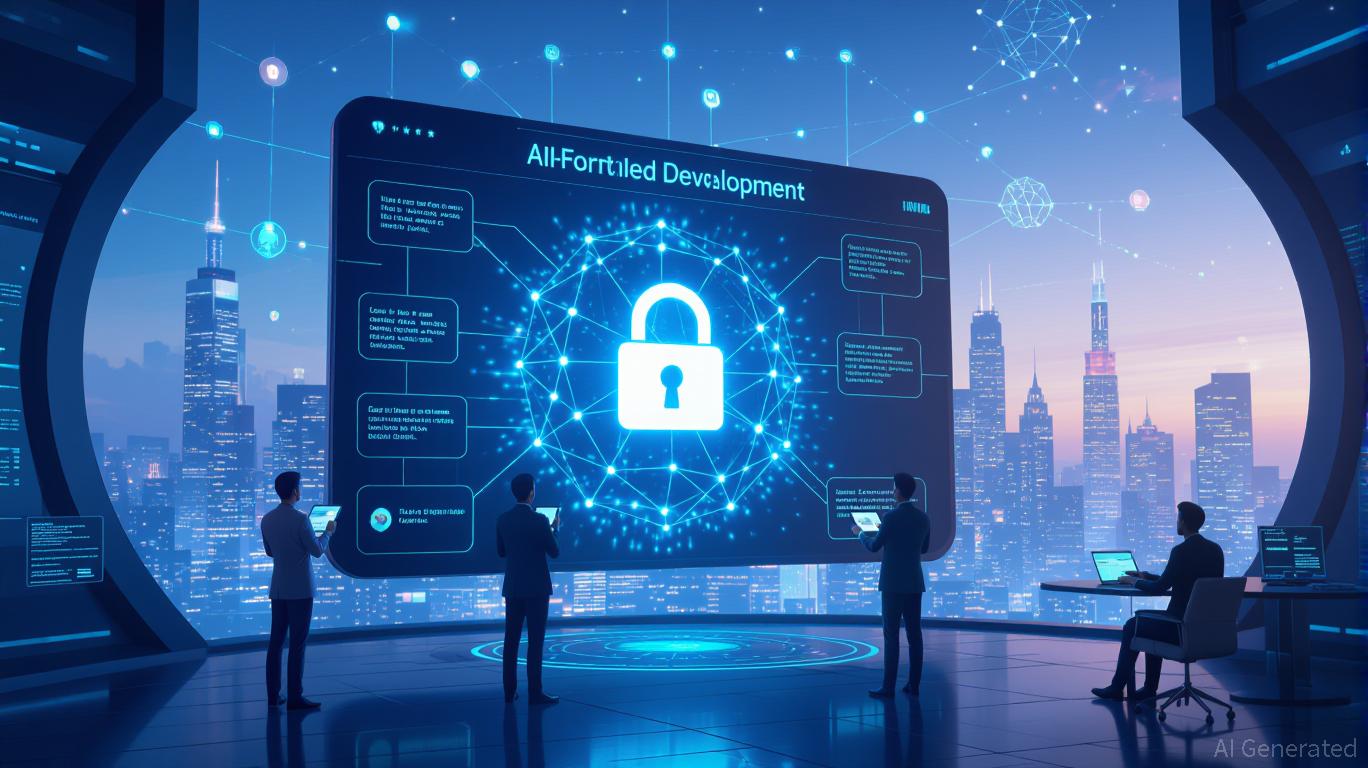Hyperliquid (HYPE) Price Rally: A Tactical Move Amidst DeFi’s Changing Market Dynamics
- Hyperliquid's HYPE token surged to $60 in late 2025 driven by protocol upgrades, capital efficiency, and CLOB-driven market dominance. - Dual-layer HyperEVM/HyperCore infrastructure enabled 73% decentralized perpetuals market share with 0.02%-0.04% trading fees. - HLP program's TVL grew from $400M to $5B by 2025, offering 11% annualized returns to liquidity providers. - CLOB model outperformed AMMs with $15B+ open interest and $3T+ trading volume, bridging DeFi and CEX performance gaps. - DAT treasury an
Protocol Upgrades and Infrastructure: The Foundation of Growth
Hyperliquid’s technological progress in 2025 has been central to its rapid growth. The introduction of HyperEVM in February 2025, an EVM-compatible layer, alongside the existing HyperCore execution layer, enabled the platform to handle hundreds of thousands of transactions per second while upholding decentralization principles

The Hyperliquidity Provider (HLP) initiative, which aggregates
Capital Efficiency and Market Structure: A CLOB-Driven Edge
Hyperliquid’s use of a central limit order book (CLOB) sets it apart from competitors. Unlike conventional automated market makers (AMMs), CLOBs allow liquidity to cluster near market prices, narrowing spreads and improving trade execution. This approach enabled Hyperliquid to capture 73% of the decentralized perpetuals market by mid-2025,
The CLOB’s transparency and rapid execution—made possible by Hyperliquid’s proprietary Layer 1 blockchain—have drawn both individual and institutional traders. By quickly listing new assets (such as the
Expert Commentary and Institutional Adoption: Validating the Bull Case
Industry experts have highlighted Hyperliquid’s competitive strengths. A study by Oak Research notes that Hyperliquid supported $47 billion in weekly trading volume during the first half of 2025, peaking at $78 billion in a single week
On-chain data further supports this outlook. By the third quarter of 2025, HYPE’s price ranged between $35 and $60,
On-Chain Metrics and Competitive Dynamics
Hyperliquid’s market leadership is evident in the data. By mid-2025, it accounted for 6.1% of centralized exchanges’ trading volume and 17.8% of their open interest,
Investment Thesis: Why HYPE is a Strategic Play
The intersection of protocol innovation, capital efficiency, and market structure forms a strong investment rationale for HYPE. The main factors include:
1. Scalable Infrastructure: HyperEVM and HyperCore deliver high-speed, low-latency trading, appealing to both retail and institutional participants.
2. Liquidity Provider Rewards: HLP’s 11% annualized yield and $68 million in net profits illustrate a sustainable approach to liquidity.
3. Market Dominance: With 73% of the decentralized perpetuals market and increasing institutional interest, HYPE is well-positioned for DeFi’s continued expansion.
4. Expanding Token Utility: The DAT and HAUS collaborations broaden HYPE’s applications, strengthening its value proposition.
Although challenges like regulatory risks and potential market manipulation remain, Hyperliquid’s transparent governance and solid on-chain performance help address these issues. For those looking to participate in the next wave of DeFi growth, HYPE stands out as a promising opportunity.
Disclaimer: The content of this article solely reflects the author's opinion and does not represent the platform in any capacity. This article is not intended to serve as a reference for making investment decisions.
You may also like
ZEC's Latest Rally and the Infrastructure-Fueled Momentum in Webster, NY
- Zcash (ZEC) surged 66% in a month as Webster , NY's $9.8M infrastructure upgrades boost regional economic confidence. - Webster's "bluefield" model combines advanced manufacturing with residential/commercial development, attracting $650M in private investment. - Institutional adoption of ZEC grew with Reliance Global Group and Cypherpunk Technologies allocating $120M+ to its zero-knowledge privacy technology. - The $283M state initiative linking physical infrastructure and digital innovation highlights s

ICP Value Jumps 30% Following Significant Network Update and Changes in Adoption
- ICP's 30% price surge in late 2025 follows major upgrades like Caffeine (AI-powered dev tools) and Chain Fusion (cross-chain interoperability), enhancing scalability and enterprise appeal. - Institutional partnerships with Microsoft and Google Cloud validate ICP's hybrid cloud potential, while Flux/Magnetosphere upgrades aim to match centralized cloud performance through TEEs. - Despite 1.2M active wallets and $1.14B daily transactions, dApp engagement fell 22.4%, highlighting gaps between infrastructure

Prediction Markets Face Legal Challenges as Kalshi’s Value Soars to $11 Billion
- Kalshi's $11B valuation doubles after $1B funding led by CapitalG and Sequoia, signaling institutional confidence in prediction markets. - Regulatory divergence emerges as Polymarket gains CFTC approval while Kalshi faces Nevada gaming law challenges over sports contracts. - Enlivex Therapeutics raises $212M via prediction market-linked strategy, highlighting sector maturation and cross-industry adoption. - Prediction markets increasingly reshape traditional finance, with CFTC licensing enabling broader

Bitcoin Updates: Federal Reserve's Shift to Dovish Stance—Will It Propel Crypto or Heighten Uncertainty?
- The Fed's end of quantitative tightening and potential December rate cut signal a dovish pivot, likely boosting crypto markets by improving liquidity and lowering holding costs for assets like Bitcoin . - Bitcoin's recent price rebound above $90,000 and January 2024 spot ETF approvals have institutionalized crypto exposure, though ETFs trade direct ownership for custody security. - Altcoins may gain from Bitcoin's declining dominance, while regulatory moves like Abu Dhabi's Ripple stablecoin approval hig
